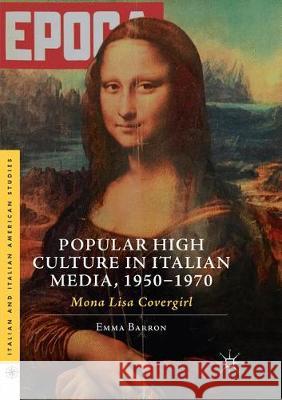Popular High Culture in Italian Media, 1950-1970: Mona Lisa Covergirl » książka
topmenu
Popular High Culture in Italian Media, 1950-1970: Mona Lisa Covergirl
ISBN-13: 9783030081423 / Angielski / Miękka / 2018 / 337 str.
Popular High Culture in Italian Media, 1950-1970: Mona Lisa Covergirl
ISBN-13: 9783030081423 / Angielski / Miękka / 2018 / 337 str.
cena 349,38 zł
(netto: 332,74 VAT: 5%)
Najniższa cena z 30 dni: 346,96 zł
(netto: 332,74 VAT: 5%)
Najniższa cena z 30 dni: 346,96 zł
Termin realizacji zamówienia:
ok. 20 dni roboczych.
ok. 20 dni roboczych.
Darmowa dostawa!
Kategorie BISAC:
Wydawca:
Palgrave MacMillan
Seria wydawnicza:
Język:
Angielski
ISBN-13:
9783030081423
Rok wydania:
2018
Dostępne języki:
Numer serii:
000456348
Ilość stron:
337
Oprawa:
Miękka











